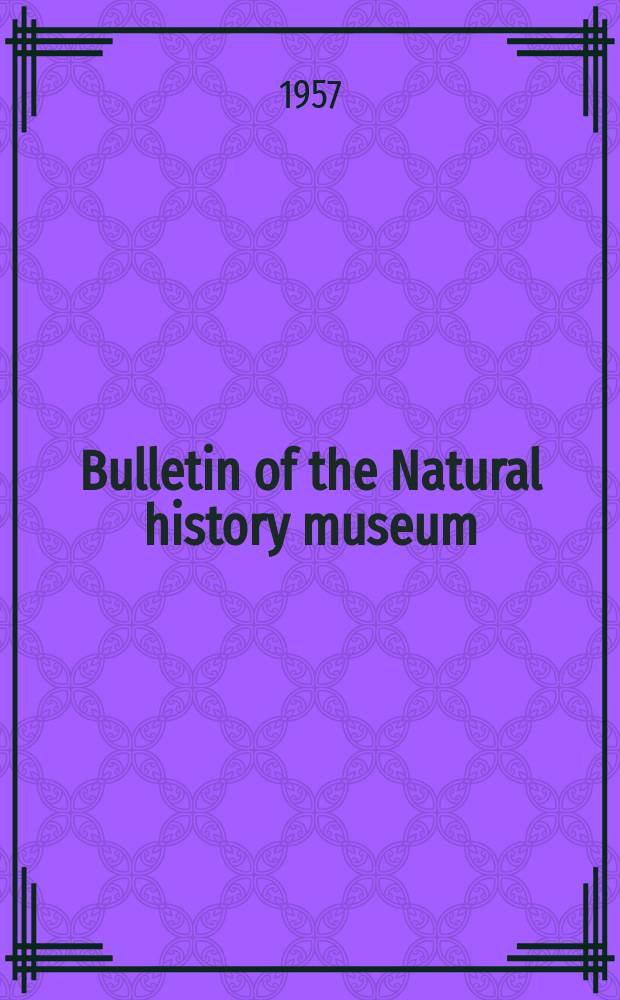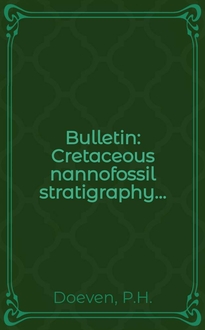Science Bulletins: Bee Deaths Linked to Common Pesticides
Several recent studies have questioned whether exposure to common pesticides might be impairing bee performance and contributing to the observed ...
American Museum of Natural History
Science Bulletins: Archived in Ice—Rescuing the Climate Record
Follow scientist-adventurer Lonnie Thompson to the 5670-meter-high Quelccaya ice cap in the Peruvian Andes. Thompson and his team from Ohio State ...
American Museum of Natural History
Science Bulletins: Jupiter's Shrinking Storm
Jupiter is a planet of extremes—it's the biggest in our solar system, it spins the fastest, it hosts the most moons, and it has the most turbulent atmosphere. But one ...
American Museum of Natural History
Science Bulletins: Impact! Tracking Near-Earth Asteroids
Collisions between space objects are a vital part of the evolution of our Solar System. Most of Earth's impact craters have been wiped away due to plate tectonics ...
American Museum of Natural History
Science Bulletins: New Tools Search for Lyme Disease in Brain
Lyme disease is caused by a bite of a tick infected with the bacteria Borrelia bergdorferi. Although it is common in some parts of the United States, it can be ...
American Museum of Natural History
Science Bulletins: Geologists on Mars
In March 2004, two NASA explorers discovered firm evidence that water once flowed on Mars—perhaps enough water to harbor life. Science Bulletins is a ...
American Museum of Natural History
Science Bulletins: On the Hunt for a Balanced Diet
Biologists had long assumed that predators were more concerned with the quantity of their food than the quality, but a recent study shows that nutritional value ...
American Museum of Natural History
Science Bulletins: SOFIA—Stars and the Space Between
By sending an infrared telescope to altitudes of 12000 meters (40000 feet) and higher, NASA and the German Aerospace Center (DLR) conduct astronomical ...
American Museum of Natural History
Science Bulletins: Making Medicine from Nature
Three cutting-edge medical technologies inspired by biodiversity. This Bio Bulletin snapshot is third in a series to celebrate the 2010 International Year of ...
American Museum of Natural History
Science Bulletins: Invasive Species
It's war in many ecosystems around the world as invasive and native species battle for primacy. Facing the increased exchange of ship ballast water among ...
American Museum of Natural History
Science Bulletins: Down and Dirty Biodiversity
The soils in tundra, grasslands, tropical forests are very different, but they have one thing in common; they all host an astounding diversity of life. Inhabiting these ...
American Museum of Natural History
Science Bulletins: Dung Beetles Mediate Methane
Agriculture produces enormous amounts of animal waste, which in turn emits great quantities of methane, a greenhouse gas that contributes to global warming.
American Museum of Natural History
Science Bulletins: New Fossils Recast Tyrannosaur Evolution
Fossils of two never-before-seen species of tyrannosaur are overturning long-held ideas about the diversity and evolution of this family of dinosaurs. One is an ...
American Museum of Natural History
Science Bulletins: MRSA—The Evolution of a Drug-Resistant Superbug
The human body is a diverse bacterial ecosystem. Humans are hosts to trillions of microbes, most of which are harmless or even beneficial. But a new study ...
American Museum of Natural History
Science Bulletins: Cocaine's Tug-of-War in the Brain
Scientists from the Mount Sinai School of Medicine are probing neurons in the brain's reward center to learn why cocaine can be so addictive. A recent study ...
American Museum of Natural History
Science Bulletins: New Frog on the Block
A new species of frog recently announced itself to scientists studying amphibians in the area surrounding New York City. The marshes and wetlands of the ...
American Museum of Natural History
Science Bulletins: Focus on Mars
This month's Astro News features a roundup of Mars stories: • A high-resolution map of Mars's surface shows geologic structures in more detail than ever before.
American Museum of Natural History
Science Bulletins: The Rise of Oxygen
Follow geologists as they hunt for, pickaxe, and test rock samples from the 2.5 billion year old Huronian Supergroup, a sedimentary formation in Ontario, Canada ...
American Museum of Natural History
Science Bulletins: Introducing the Denisovans
New research led by scientists at Germany's Max Planck Institute for Evolutionary Anthropology confirms that a 40000-year-old finger bone and tooth belong to a ...
American Museum of Natural History
Science Bulletins: Habitat Corridors Benefit Isolated Plants
In many open habitats, more than one-third of seeds are wind-dispersed. For isolated patches of plants, the interaction of wind with the landscape can determine ...
American Museum of Natural History
Science Bulletins: Water Underground
Texas endured its driest year ever in 2011, and southern Alabama and Georgia have continued to suffer serious drought in 2012. Climate change is predicted to ...
American Museum of Natural History
Science Bulletins: Bat Succeeds at Part-Time Pollination
Many plants and their pollinators co-evolved specialized adaptations that aid pollination. But researchers recently found that a species of desert bat that is not ...
American Museum of Natural History
Science Bulletins: Tracing the First Americans
When and where did humans first enter the Americas—and what routes did they travel to colonize the continents? These are big questions for scientists studying ...
American Museum of Natural History
Science Bulletins: Lake Mead: Empty by 2021?
Scientists from the Scripps Institution of Oceanography have analyzed the current and predicted "water budget"—the amount of water going in and coming ...
American Museum of Natural History
Science Bulletins: Deadly Larvae Lure Predators
Amphibians that try to feed on the larvae of the Epomis beetle will find that they've bitten off more than they can chew. Rather than avoiding its predators, the ...
American Museum of Natural History
Science Bulletins: The Roots of Human Language
The landscape of human language is complex. Tracing the origins of the 7000 known modern languages has been a significant challenge for scientists, but a ...
American Museum of Natural History
Science Bulletins: Supramap Tracks Diseases as They Evolve
As pathogens mutate they can become more dangerous, developing resistance to drugs or migrating to new host species. Tracking mutations helps scientists ...
American Museum of Natural History
Science Bulletins: Bilingual Brain 'Switch' Found
A recent study led by University College London neuroscientist Cathy Price reveals how the human brain is uniquely adapted to manage multiple languages.
American Museum of Natural History
Science Bulletins: Lighting Up Chandra’s X-Ray Views
Chandra, the biggest X-ray space telescope to date, detects high-energy emissions from very hot regions of the universe. Since launching in 1999, Chandra has ...
American Museum of Natural History
Science Bulletins: Gamers Model AIDS-Related Protein
The structure of a protein controlling growth in the HIV virus eluded scientists for over a decade. Online gamers used Foldit, a competitive protein-modeling ...
American Museum of Natural History
Science Bulletins: The Hunt for Planet X
A large, unseen planet may be lurking in the cold, dim reaches of our solar system. Using a combination of theory and observation, scientists have estimated the ...
American Museum of Natural History
Science Bulletins: The Cosmic Microwave Background—A New View from the South Pole
The icy South Pole desert is a harsh and desolate landscape in which few life-forms can flourish. But the extreme cold and isolation are perfect for astronomical ...
American Museum of Natural History
Science Bulletins: Urban Sprawl—Phoenix
Most people think of urban sprawl as the construction of roads and buildings at a rate that exceeds population growth. Phoenix, Arizona, however, offers a ...
American Museum of Natural History
Science Bulletins: Super Corals—Understanding the Science (3 of 3)
Marine biologists in Hawaii investigate so-called “super corals,” which thrive even as ocean temperatures rise. In Understanding the Science, watch scientists in ...
American Museum of Natural History
Science Bulletins: Exploring a Star’s Death in 3D
Cassiopeia A is the gas cloud left behind after a star exploded, first glimpsed on Earth about 325 years ago. Its youth and proximity to us make it one of the ...
American Museum of Natural History
Science Bulletins: Comeback Frog Revives an Ancient Lineage
Although the Hula painted frog was declared extinct in 1996, rangers in the frogs' wetland habitat recently spotted 11 individuals. Closer examination of the ...
American Museum of Natural History
Science Bulletins: Hubble Spots Star Factories
A survey of the oldest objects in the Universe has revealed a multitude of dwarf galaxies that are producing stars at a dizzying pace. Using the infrared vision of ...
American Museum of Natural History
Science Bulletins: Reading the Rocks—The Search for Oil in ANWR
In 1980 an act of Congress set aside nearly 20 million acres of Alaska's North Slope tundra to create the Arctic National Wildlife Refuge (ANWR). Less than 100 ...
American Museum of Natural History
Traditional Silk-Making - From AMNH's Silk Road Exhibition
Sericulturist Michael Cook describes the process of making silk using traditional techniques. This video was produced by the American Museum of Natural ...
American Museum of Natural History
Science Bulletins: GRAIL Spacecraft Ready to Map the Moon
NASA's Gravity Recovery and Interior Laboratory (GRAIL) mission has put a pair of nearly identical spacecraft in orbit around the Moon. By using radio waves to ...
American Museum of Natural History
Science Bulletins: Oil Spill Poses Risks to Gulf Ecosystems
When the Deepwater Horizon offshore oil rig in the Gulf of Mexico exploded on April 20, 2010, it set off an oil spill that may exceed the extent and impact of the ...
American Museum of Natural History
Science Bulletins: Potato Biodiversity—Ensuring the Future
Farmers in the Andes use biodiversity as insurance. The potato, a plant native to the area that is now the world's fourth most important staple crop, is still locally ...
American Museum of Natural History


























































